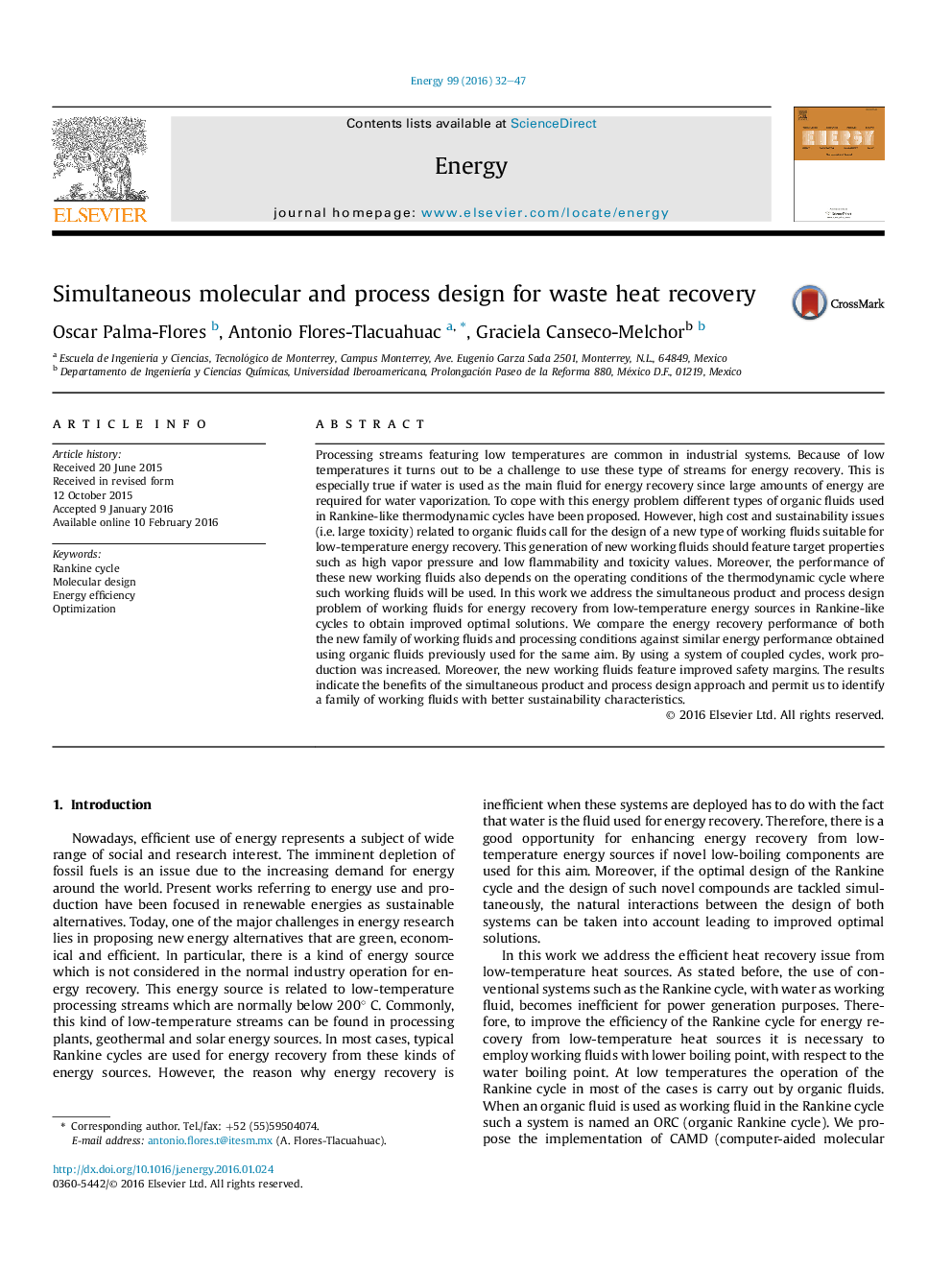| Article ID | Journal | Published Year | Pages | File Type |
|---|---|---|---|---|
| 1731314 | Energy | 2016 | 16 Pages |
Abstract
Processing streams featuring low temperatures are common in industrial systems. Because of low temperatures it turns out to be a challenge to use these type of streams for energy recovery. This is especially true if water is used as the main fluid for energy recovery since large amounts of energy are required for water vaporization. To cope with this energy problem different types of organic fluids used in Rankine-like thermodynamic cycles have been proposed. However, high cost and sustainability issues (i.e. large toxicity) related to organic fluids call for the design of a new type of working fluids suitable for low-temperature energy recovery. This generation of new working fluids should feature target properties such as high vapor pressure and low flammability and toxicity values. Moreover, the performance of these new working fluids also depends on the operating conditions of the thermodynamic cycle where such working fluids will be used. In this work we address the simultaneous product and process design problem of working fluids for energy recovery from low-temperature energy sources in Rankine-like cycles to obtain improved optimal solutions. We compare the energy recovery performance of both the new family of working fluids and processing conditions against similar energy performance obtained using organic fluids previously used for the same aim. By using a system of coupled cycles, work production was increased. Moreover, the new working fluids feature improved safety margins. The results indicate the benefits of the simultaneous product and process design approach and permit us to identify a family of working fluids with better sustainability characteristics.
Related Topics
Physical Sciences and Engineering
Energy
Energy (General)
Authors
Oscar Palma-Flores, Antonio Flores-Tlacuahuac, Graciela Canseco-Melchorb,
